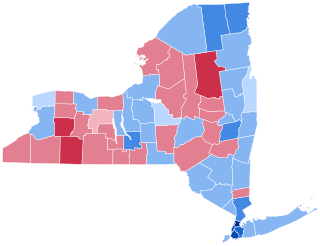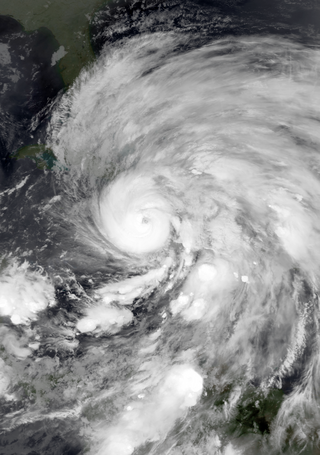
The Buddhist Tzu Chi Charity Foundation, is a Taiwanese international humanitarian and nongovernmental organization. Its work includes medical aid, disaster relief, and environmental work.

Emergency management or disaster management is a science and a system charged with creating the framework within which communities reduce vulnerability to hazards and cope with disasters. Emergency management, despite its name, does not actually focus on the management of emergencies, which can be understood as minor events with limited impacts and are managed through the day-to-day functions of a community. Instead, emergency management focuses on the management of disasters, which are events that produce more impacts than a community can handle on its own. The management of disasters tends to require some combination of activity from individuals and households, organizations, local, and/or higher levels of government. Although many different terminologies exist globally, the activities of emergency management can be generally categorized into preparedness, response, mitigation, and recovery, although other terms such as disaster risk reduction and prevention are also common. The outcome of emergency management is to prevent disasters and where this is not possible, to reduce their harmful impacts.

The disaster recovery response to Hurricane Katrina in late 2005 included U.S. federal government agencies such as the Federal Emergency Management Agency (FEMA), the United States Coast Guard (USCG), state and local-level agencies, federal and National Guard soldiers, non-governmental organizations, charities, and private individuals. Tens of thousands of volunteers and troops responded or were deployed to the disaster; most in the affected area but also throughout the U.S. at shelters set up in at least 19 states.

Catholic Relief Services (CRS) is the international humanitarian agency of the Catholic community in the United States. Founded in 1943 by the Bishops of the United States, the agency provides assistance to 130 million people in more than 110 countries and territories in Africa, Asia, Latin America, the Middle East and Eastern Europe.

Direct Relief is a nonprofit humanitarian organization whose mission is to improve the lives of people in poverty or emergency situations by providing the appropriate medical resources. The charity provides emergency medical assistance and disaster relief in the United States and internationally. The organization is headed by an independent board of directors and its president and CEO, Thomas Tighe.

SBP is a nonprofit, disaster relief organization. After temporarily volunteering in St. Bernard Parish, Louisiana after Hurricane Katrina, Liz McCartney and Zack Rosenburg returned permanently in March 2006 and founded the project. The organization eventually expanded to include offices in New Orleans and Baton Rouge in Louisiana, Joplin, Missouri, Columbia, South Carolina, New Jersey, New York, and West Virginia. By August 2022, SBP's national impact included assistance to 5,500 families, including the rebuilding of over 1,200 homes, including 600 in New Orleans. They have collaborated extensively with Toyota and Americorps. As a result of its accomplishments, the organization and its founders have been recognized by Senator Mary Landrieu, CNN, and President Barack Obama.
Mutual aid is an organizational model where voluntary, collaborative exchanges of resources and services for common benefit take place amongst community members to overcome social, economic, and political barriers to meeting common needs. This can include physical resources like food, clothing, or medicine, as well as services like breakfast programs or education. These groups are often built for the daily needs of their communities, but mutual aid groups are also found throughout relief efforts, such as in natural disasters or pandemics like COVID-19.
Islamic Relief USA (IRUSA), based in Alexandria, Virginia, is a non-profit 501(c)(3) humanitarian agency and member of the Islamic Relief Worldwide group of organizations. IRUSA was founded in California in 1993. In addition to international relief and development initiatives, Islamic Relief USA also sponsors and funds domestic projects ranging from emergency disaster responses to assisting the American homeless population and supporting those who cannot afford basic healthcare.

The Church of Saint Clare, located in the Great Kills neighborhood of Staten Island, New York City, is the largest-membership parish under the authority of the Roman Catholic Archdiocese of New York. It is dedicated to Clare of Assisi, and it includes a co-educational PreK–8 Catholic school and Religious Education program. It became an independent parish in 1925 and has six principal buildings dating from 1921 to 1979: the church, school, converted convent, parish center, chapel, and rectory. St. Clare's has received national attention for its architecture, its educational programs, its heavy casualties from the September 11 attacks, and its two priests lost to the COVID-19 pandemic.

Occupy Wall Street (OWS) was a left-wing populist movement against economic inequality, corporate greed, big finance, and the influence of money in politics that began in Zuccotti Park, located in New York City's Financial District, and lasted for fifty-nine days—from September 17 to November 15, 2011.

The 2012 United States presidential election in New York took place on November 6, 2012, as part of the 2012 United States presidential election in which all 50 states plus the District of Columbia participated. Voters chose 29 electors to represent them in the Electoral College via a popular vote pitting incumbent Democratic President Barack Obama and his running mate, Vice President Joe Biden, against Republican challenger and former Massachusetts Governor Mitt Romney and his running mate, Congressman Paul Ryan.

Emergency Response Team Search and Rescue (ERTSAR) is an INSARAG listed international disaster response NGO search and rescue team, with bases in Henley-on-Thames, United Kingdom and Toronto, Canada.

Hurricane Sandy was an extremely large and destructive Category 3 Atlantic hurricane which ravaged the Caribbean and the coastal Mid-Atlantic region of the United States in late October 2012. It was the largest Atlantic hurricane on record as measured by diameter, with tropical-storm-force winds spanning 1,150 miles (1,850 km). The storm inflicted nearly $70 billion USD in damage, and killed 233 people in eight countries, from the Caribbean to Canada. The eighteenth named storm, tenth hurricane, and second major hurricane of the 2012 Atlantic hurricane season, Sandy was a Category 3 storm at its peak intensity when it made landfall in Cuba, though most of the damage it caused was after it became a Category 1-equivalent extratropical cyclone off the coast of the Northeastern United States.

New York was severely affected by Hurricane Sandy on October 29–30, 2012, particularly New York City, its suburbs, and Long Island. Sandy's impacts included the flooding of the New York City Subway system, of many suburban communities, and of all road tunnels entering Manhattan except the Lincoln Tunnel. The New York Stock Exchange closed for two consecutive days. Numerous homes and businesses were destroyed by fire, including over 100 homes in Breezy Point, Queens. Large parts of the city and surrounding areas lost electricity for several days. Several thousand people in midtown Manhattan were evacuated for six days due to a crane collapse at Extell's One57. Bellevue Hospital Center and a few other large hospitals were closed and evacuated. Flooding at 140 West Street and another exchange disrupted voice and data communication in lower Manhattan.
Hurricane Sandy: Coming Together was a one-hour, commercial-free benefit concert television special that aired simulcast in the United States on November 2, 2012 at 8 p.m. ET/CT live from New York City and tape delayed MT and PT. The special raised money for the relief efforts from the aftermath of Hurricane Sandy, which had struck the U.S. Northeast four days earlier. All proceeds went to the American Red Cross.
In late October 2012, the post-tropical cyclone once known as Hurricane Sandy made landfall in New Jersey. By the time it made landfall, it had merged with other storm systems. Though no longer a hurricane, the combined storm caused over $50 billion in damages and cost over 100 lives in the United States.

Public Law 113-2, containing Division A: Disaster Relief Appropriations Act, 2013 and Division B: Sandy Recovery Improvement Act of 2013 is a U.S. appropriations bill authorizing $60 billion for disaster relief agencies. The Budget Control Act of 2011 (BCA), had authorized only disaster spending and emergency spending to exceed established spending caps. While emergency spending is not subject to the caps in the BCA, spending for disaster relief is calculated by taking the average of the previous ten years disaster relief spending, excluding the highest and lowest spending years.

Michael Premo is an artist who lives in Brooklyn. He played a significant role in Occupy Wall Street and Occupy Sandy's hurricane response effort.

All Hands and Hearts (AHAH) is a U.S. 501(c)(3) nonprofit organization. The organization's current structure formed in late 2017, when two existing nonprofits, All Hands Volunteers and Happy Hearts Fund merged to become All Hands and Hearts. All Hands Volunteers was founded in September 2005 by philanthropist and businessman David Campbell to provide relief to residents in areas affected by natural disasters worldwide. Happy Hearts Fund, founded by philanthropist and supermodel, Petra Němcová, sought a similar goal, to help communities recover after a disaster event. All Hands and Hearts is based in Mattapoisett, Massachusetts.

Todd Kaminsky is an American attorney, lobbyist, and former politician from the state of New York. A Democrat, he was a member of the New York State Senate representing the 9th district, which is based on the South Shore of Long Island. He was the Democratic nominee for Nassau County District Attorney in 2021 but lost the general election to Anne Donnelly by a landslide.
















